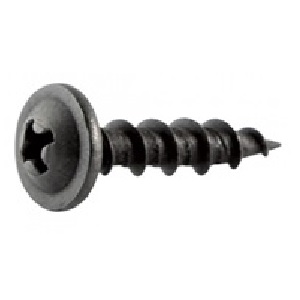Binding Head
It is similar to pan head but with much thicker flat bearing surface and deeper slot for the drive style which usually increase its bearing capacity compare to pan heads. Mainly used as bookbinding’s screws, binding wires or electrical works.
Bugle Head
These have a countersunk head with a flat top surface, much like a flat screw, and have concave curved shape under the bearing head which usually reduces the damage to surface.
These heads distribute bearing stress over a wider area as compare to flat heads.
These heads mostly found on the screw
Button Head
These are domed head, large diameter, and hex drive style on the top which usually a good substitute to other because of their resistance towards slipping and stripping unlike Phillips and slotted drive. It is suggested for lighter fastening operations because at high strength socket heads are used.
Fillister Head
The standard fillister head has a smaller diameter than the round head, but having deeper slot which allows high level torques. Smaller diameter increases the pressure on the load bearing surface and therefore can be assembled with the raised surface.
Used in numerous electrical and heavy machinery productions.
Flange Head
It is a combination of a screw and washer. The head can be circular or hexed with a washer underneath the flat load bearing surface which usually increases the bearing capacity by distributing pressure and helps the screw to remain in its position. Generally used as a self-drilling screw in
Flat Head Screw
Flat screw head sits entirely with the same plane of the mating surface. It has a countersunk head with a flat top surface and cone shape under the bearing surface having 82 degree standard.
The degree of a flat head denotes to the angle from the topmost of the head to
Oval or Raised Head
These are same as flat head screw but the only difference is that there is a domed shape above the head which come out of the surface slightly makes its more decorative (usually of chrome and nickel plated)
It doesn’t necessarily effects on the performance.
Pan Head
These non-countersunk heads have flat or slightly round head with chamfered edges, and a flat load bearing surface on the underside with moderate head height and diameter. These heads are the most common and were designed to replace round head, truss head, binding head applications. These have high outer edges
Round Head
These have high profile, deep drive cut, but low diameter than the pan head. It was one of the most universally accepted designed in the past but now outdated in many countries, but still in use where aesthetic part is dominant over other factors therefore finished in brass, chromium. Usually
Socket Head
These are strongest and robust of all types of screws heads and are recognized for their durability and quality, therefore made of high grade carbon and stainless steel. These are generally found on the screws with a hex drive on the top of their head. The screws have cylindrical heads
Truss Head
Also known as oven head, stove head or oval binding head. There is a low profile dome head and extra wide load bearing flat surface comparative to other heads which makes it strong hold for thin materials.
Truss head is weaker than Pan and round head but used where clearance is












